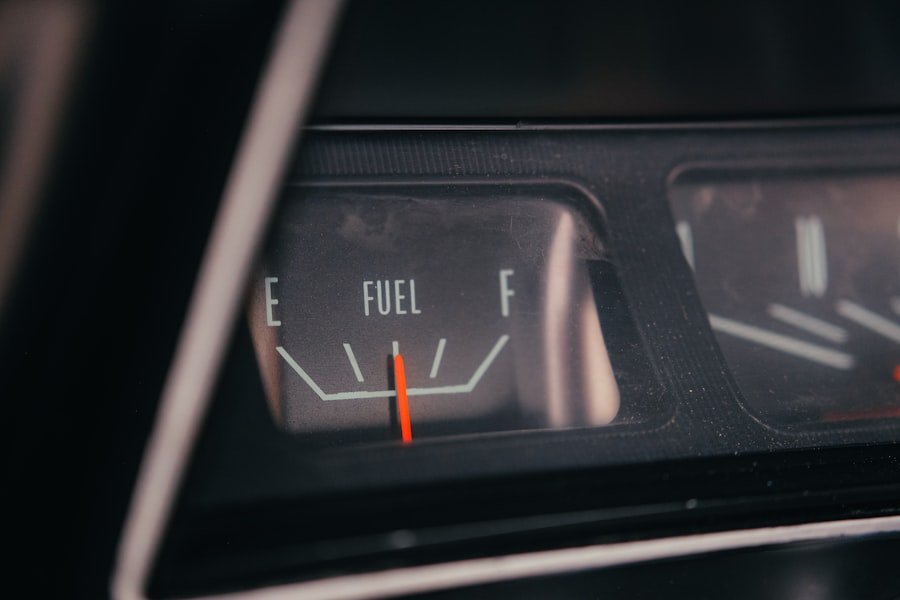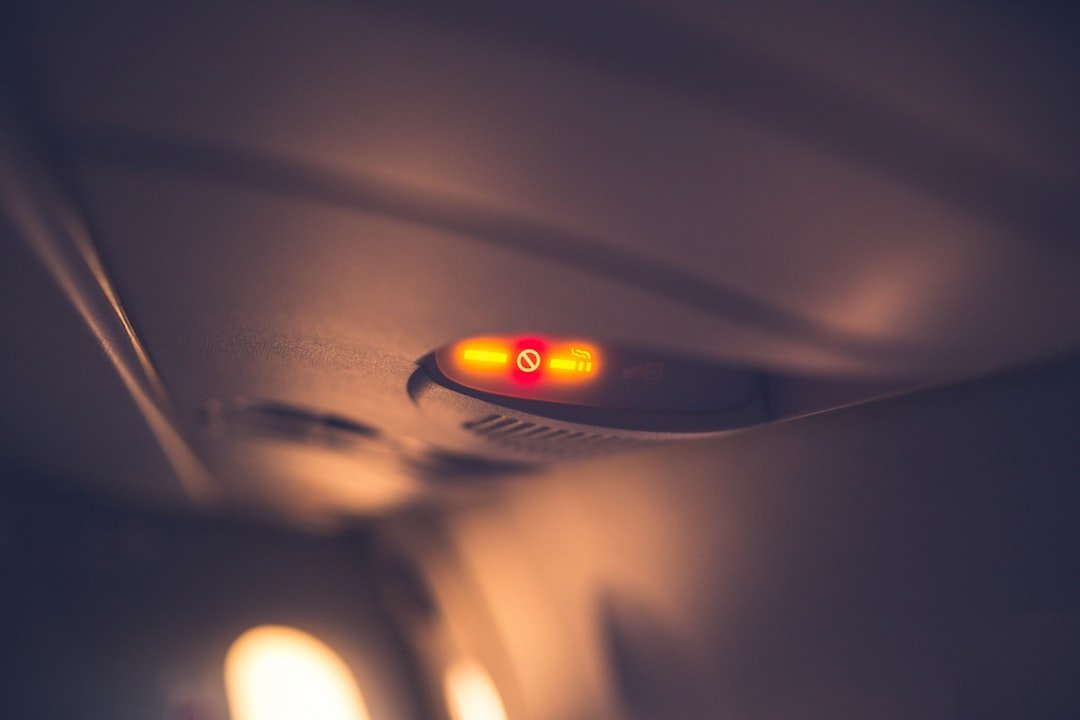Car overheating is a common issue that many drivers face, particularly when their vehicles are idling for extended periods. This phenomenon can lead to severe engine damage if not addressed promptly. When a car is stationary, the engine continues to run, generating heat, but the cooling system may not be as effective as it is during motion.
Understanding the intricacies of this problem is crucial for any vehicle owner, as it can save both time and money in repairs. The consequences of an overheating engine can be dire, ranging from blown head gaskets to complete engine failure. Therefore, recognizing the signs of overheating and understanding the underlying causes is essential for maintaining vehicle health.
This article delves into the various aspects of car overheating when idle, including the cooling system’s function, common causes, preventive measures, and the importance of regular maintenance.
Key Takeaways
- Car overheating at idle can be a common issue and understanding the cooling system is crucial for prevention.
- Regular maintenance of the cooling system is important to prevent car overheating at idle.
- Signs of a failing cooling system include overheating, coolant leaks, and unusual engine noises.
- To prevent car overheating at idle, ensure proper coolant levels, check for leaks, and maintain the cooling system.
- When your car overheats at idle, turn off the air conditioning, turn on the heater, and pull over to a safe location.
Understanding the cooling system in a car
The cooling system in a car is a complex network designed to regulate engine temperature and prevent overheating. It primarily consists of several key components: the radiator, water pump, thermostat, hoses, and coolant. The radiator dissipates heat from the engine coolant, while the water pump circulates this coolant throughout the engine block and back to the radiator.
The thermostat plays a critical role by regulating the flow of coolant based on temperature, ensuring that the engine operates within its optimal range. When a vehicle is in motion, air flows through the radiator, enhancing its ability to cool the engine. However, when a car is idling, this airflow diminishes significantly.
As a result, the cooling system must rely more heavily on its internal mechanisms to manage heat. If any component of this system fails or operates inefficiently, it can lead to overheating, especially when the vehicle is not moving. Understanding how these components work together is vital for diagnosing and addressing overheating issues effectively.
Common causes of car overheating at idle

Several factors can contribute to a car overheating while idling. One of the most prevalent causes is a malfunctioning thermostat. If the thermostat becomes stuck in a closed position, it prevents coolant from circulating through the engine and radiator, leading to increased temperatures.
This issue can be particularly problematic during stop-and-go traffic or when parked for extended periods. Another common culprit is a failing water pump. The water pump is responsible for circulating coolant throughout the engine; if it malfunctions, coolant flow can be restricted or halted entirely.
This situation can quickly lead to overheating, especially when the engine is idling and not receiving adequate cooling from airflow. Additionally, leaks in hoses or connections can result in coolant loss, further exacerbating the problem. Clogged radiators can also contribute to overheating at idle.
Over time, debris and sediment can accumulate within the radiator, obstructing coolant flow and reducing its ability to dissipate heat effectively. Furthermore, low coolant levels due to leaks or evaporation can lead to insufficient cooling capacity. Each of these factors highlights the importance of regular inspections and maintenance to ensure that all components of the cooling system are functioning optimally.
Importance of regular maintenance for the cooling system
| Importance of regular maintenance for the cooling system |
|---|
| 1. Prevents costly repairs |
| 2. Extends the lifespan of the cooling system |
| 3. Maintains energy efficiency |
| 4. Ensures proper cooling capacity |
| 5. Reduces the risk of breakdowns |
Regular maintenance of the cooling system is essential for preventing overheating issues and ensuring overall vehicle reliability. Routine checks can help identify potential problems before they escalate into more significant issues that require costly repairs. For instance, inspecting hoses for cracks or leaks can prevent coolant loss and maintain proper pressure within the system.
Additionally, flushing and replacing old coolant is crucial for maintaining optimal performance. Over time, coolant can become contaminated with rust and debris, reducing its effectiveness in transferring heat away from the engine. A regular coolant flush helps remove these contaminants and ensures that fresh coolant circulates through the system.
This practice not only enhances cooling efficiency but also prolongs the life of critical components like the radiator and water pump. Moreover, checking and replacing the thermostat as needed can prevent overheating scenarios from occurring in the first place. A malfunctioning thermostat can lead to erratic temperature readings and inefficient cooling performance.
By incorporating these maintenance practices into a regular vehicle service schedule, drivers can significantly reduce their risk of experiencing overheating issues while idling.
Signs of a failing cooling system
Recognizing the signs of a failing cooling system is crucial for preventing overheating and potential engine damage. One of the most apparent indicators is an increase in engine temperature as displayed on the dashboard gauge. If the needle consistently hovers in the red zone or if warning lights illuminate, it’s essential to take immediate action.
Another sign to watch for is steam rising from under the hood. This phenomenon often indicates that coolant is boiling over due to excessive heat or that there’s a significant leak somewhere in the system. Additionally, unusual noises such as grinding or whining from the water pump area may suggest that it’s failing and needs replacement.
Drivers should also be alert for any signs of coolant leaks on the ground where they park their vehicle. Puddles of bright green, orange, or pink fluid can indicate a leak in hoses or connections. Furthermore, if there’s a sweet smell inside or outside the vehicle, it could signify coolant escaping from a compromised component.
Addressing these signs promptly can help prevent more severe issues down the line.
How to prevent car overheating at idle

Preventing car overheating while idling involves several proactive measures that drivers can take to ensure their vehicles remain in optimal condition. One effective strategy is to avoid prolonged idling whenever possible. If you find yourself waiting for an extended period—such as at a drive-thru or while waiting for someone—consider turning off your engine to reduce heat buildup.
Regularly checking coolant levels is another essential preventive measure. Keeping an eye on your vehicle’s coolant reservoir ensures that you have adequate fluid to maintain proper engine temperature. If you notice that your coolant levels are consistently low, it may indicate a leak or other issues within the cooling system that need addressing.
Additionally, ensuring that your radiator is free from debris and dirt can enhance its cooling efficiency. Regularly cleaning the exterior of the radiator helps maintain optimal airflow and prevents overheating during idle conditions. Furthermore, investing in high-quality coolant that meets your vehicle’s specifications can improve overall performance and longevity of your cooling system.
Steps to take when your car overheats at idle
If you find yourself in a situation where your car begins to overheat while idling, it’s crucial to act quickly to mitigate potential damage. The first step is to turn off your air conditioning immediately; this reduces strain on the engine and allows it to cool down more effectively. Next, you should turn on your heater to its maximum setting; this may seem counterintuitive but helps draw heat away from the engine into the cabin.
If you have access to a safe location, pull over as soon as possible and turn off your engine. Allowing your vehicle to sit for a few minutes can help lower temperatures naturally. While waiting, check your temperature gauge; if it continues to rise or if you see steam escaping from under the hood, it’s essential not to open the hood immediately as this could expose you to hot steam or fluids.
After allowing some time for cooling, inspect your vehicle for any visible signs of leaks or damage before attempting to add coolant if necessary. If you’re unsure about how to proceed or if your vehicle continues to overheat after taking these steps, it’s advisable to call for roadside assistance or have your vehicle towed to a professional mechanic for further evaluation.
The role of coolant in preventing car overheating
Coolant plays a pivotal role in preventing car overheating by regulating engine temperature and facilitating heat dissipation through various components of the cooling system. Composed primarily of water mixed with antifreeze agents—such as ethylene glycol—coolant has unique properties that allow it to absorb heat efficiently while also preventing freezing in colder temperatures. When circulating through the engine block, coolant absorbs excess heat generated during combustion processes and transports it back to the radiator for dissipation.
The radiator then releases this heat into the atmosphere through airflow facilitated by either natural movement or electric fans when idling. This continuous cycle ensures that engine temperatures remain within safe operating limits. Moreover, coolant also contains additives that help prevent corrosion within the cooling system’s components.
Over time, rust and scale buildup can hinder performance and lead to leaks or blockages that contribute to overheating issues. Regularly checking and replacing coolant according to manufacturer recommendations helps maintain its effectiveness in protecting against both overheating and internal damage.
How weather conditions can affect car overheating at idle
Weather conditions play a significant role in influencing car overheating at idle. High ambient temperatures can exacerbate existing cooling system inefficiencies by increasing overall engine temperatures more rapidly than usual. For instance, during hot summer months, vehicles are more prone to overheating when idling due to reduced airflow through radiators combined with increased thermal load on engines.
Conversely, extremely cold weather can also impact cooling systems negatively if proper precautions aren’t taken. In colder climates, drivers may neglect regular maintenance checks on their vehicles’ cooling systems because they assume that freezing temperatures will prevent overheating issues. However, if coolant levels are low or if there are existing leaks, even cold weather can lead to problems when engines are running at higher temperatures during operation.
Additionally, humidity levels can affect how well engines dissipate heat while idling; high humidity can reduce airflow efficiency around radiators and engines alike. Understanding how these weather-related factors influence vehicle performance allows drivers to take appropriate measures—such as adjusting driving habits or scheduling maintenance checks—to mitigate potential overheating risks.
The impact of low oil levels on car overheating
Low oil levels can significantly contribute to car overheating issues by impairing lubrication within critical engine components. Engine oil serves multiple functions beyond lubrication; it also helps dissipate heat generated during combustion processes by carrying it away from hot areas like pistons and cylinder walls. When oil levels drop below recommended thresholds due to leaks or neglectful maintenance practices, friction increases between moving parts leading not only to wear but also elevated temperatures.
Inadequate lubrication caused by low oil levels can result in increased friction between components such as bearings and camshafts—this friction generates additional heat which compounds existing thermal loads on engines already struggling with cooling inefficiencies during idle conditions. Consequently, drivers may experience symptoms such as warning lights illuminating on dashboards indicating low oil pressure alongside rising temperature gauges signaling potential overheating risks. To prevent these issues from arising due diligence regarding regular oil changes should be prioritized alongside routine checks on oil levels between services—this ensures optimal performance while minimizing risks associated with both low oil levels and subsequent overheating scenarios.
Seeking professional help for persistent car overheating issues
If you find yourself dealing with persistent car overheating issues despite taking preventive measures and performing regular maintenance checks on your vehicle’s cooling system, seeking professional help becomes imperative. A qualified mechanic possesses specialized knowledge and tools necessary for diagnosing complex problems that may not be immediately apparent during casual inspections. Professional technicians can conduct comprehensive assessments of all components within your cooling system—from radiators and water pumps down through hoses—to identify underlying issues contributing to repeated overheating incidents while idling or during operation under load conditions alike.
They may also utilize diagnostic equipment capable of detecting faults within electronic systems governing temperature regulation processes which could otherwise go unnoticed by untrained eyes. Furthermore, mechanics have access to high-quality replacement parts tailored specifically for your make and model—ensuring repairs are performed correctly using appropriate materials designed for longevity rather than relying solely on generic solutions available at local auto parts stores which may not meet OEM specifications required for optimal performance over time. In conclusion, addressing persistent car overheating problems requires both vigilance on behalf of drivers regarding routine maintenance practices alongside willingness seek expert assistance whenever necessary—this dual approach ultimately safeguards against costly repairs while ensuring reliable operation throughout ownership experience.
If you’re experiencing issues with your car overheating when idle, you may want to check out this article on properly hanging curtains: a step-by-step guide. Just like with car maintenance, attention to detail and following the correct steps can make all the difference in ensuring everything runs smoothly.
FAQs
What are the common reasons for a car overheating when idle?
Some common reasons for a car overheating when idle include a malfunctioning cooling system, low coolant levels, a faulty thermostat, a clogged radiator, or a malfunctioning cooling fan.
How does a malfunctioning cooling system cause a car to overheat when idle?
A malfunctioning cooling system can cause a car to overheat when idle because it may not be able to properly circulate coolant through the engine to regulate its temperature.
What role does low coolant levels play in causing a car to overheat when idle?
Low coolant levels can cause a car to overheat when idle because there may not be enough coolant to effectively absorb and dissipate the heat generated by the engine.
How does a faulty thermostat contribute to a car overheating when idle?
A faulty thermostat can cause a car to overheat when idle because it may not open and close properly, leading to improper coolant flow and temperature regulation.
What impact does a clogged radiator have on a car’s tendency to overheat when idle?
A clogged radiator can cause a car to overheat when idle because it restricts the flow of coolant through the system, preventing proper heat dissipation.
How does a malfunctioning cooling fan affect a car’s tendency to overheat when idle?
A malfunctioning cooling fan can cause a car to overheat when idle because it may not kick in to help dissipate heat when the car is not in motion.

